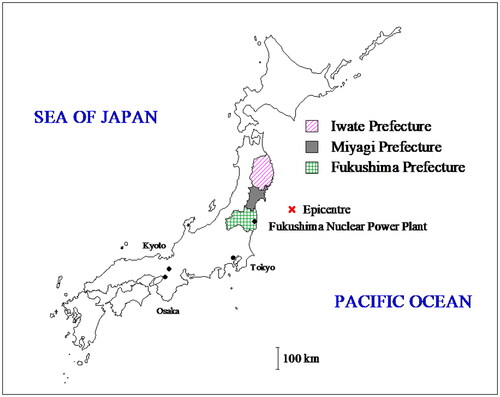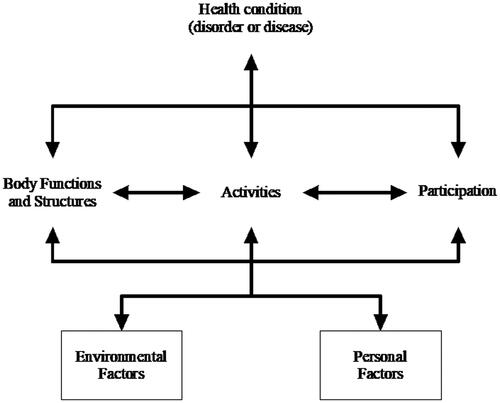Figures & data
Figure 1. Epicentre and main disaster area. The Great East Japan Earthquake (magnitude 9.0) occurred at 14:46, on 11 March 2011.

Figure 2. Interactions between the components of ICF. Individual health and health-related states are expressed by the ICF components. Source: ICF Manual (WHO, 2008, p. 23).

Table 1. Structure of ICF codes.
Table 2. Newspaper interviewees.
Table 3. Example of ICF coding.
Table 4. Total number of ICF codes based on newspaper interviews.
Table 5. Total number of ICF qualifiers based on newspaper interviews.
Table 6. ICF codes based on interview responses and their qualifiers.
Table 7. Total number of main ideas based on interview responses.
Table 8. Total number of strengths based on interview responses.
Data availability statement
Each newspaper interview article is available on the following newspaper publisher databases (written in Japanese): The Asahi Shimbun, http://www.asahi.com/information/db/; Fukushima Minpo, https://www.minpo.jp/cdrom). The ICF coding datasets produced by the author are not shared to maintain the privacy of interviewees.
